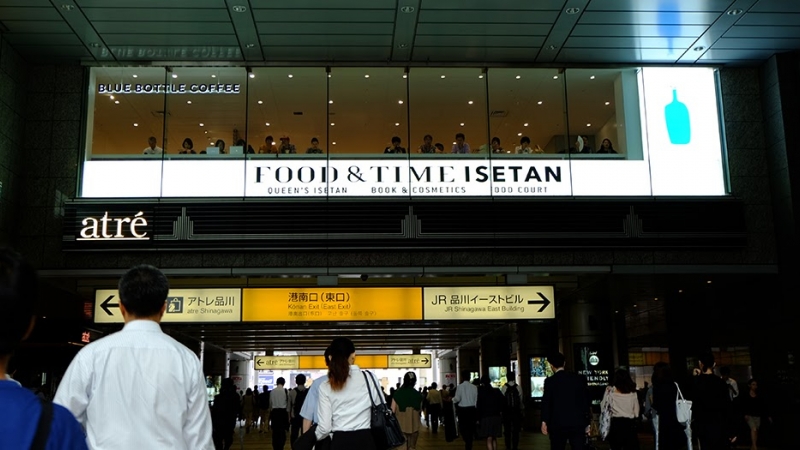Negi Soba (ネギそば) is a specialty dish made by combining buckwheat soba noodles with Naga Negi, or “long onion,” the Japanese name for baro onions. Negi soba was originally called Takato Soba. Legend has it that on his way back to the Aizu region from Nagano Prefecture, Prince Masayuki Hoshina was accompanied by retainers of the Takato clan of Nagano Prefecture. Seeing one of the retainers eating soba noodles with grated daikon and green onions, the people of Aizu began to follow suit. A variation of this noodle dish quickly spread throughout the region and was called Takato soba.
Soba are thin noodles made from buckwheat flour, usually light brown in color, easily distinguishable from the thick white noodles udon or the yellow ramen noodles. Ouchi-juku's soba noodles are chewy, fragrant, and have a sweet aftertaste.
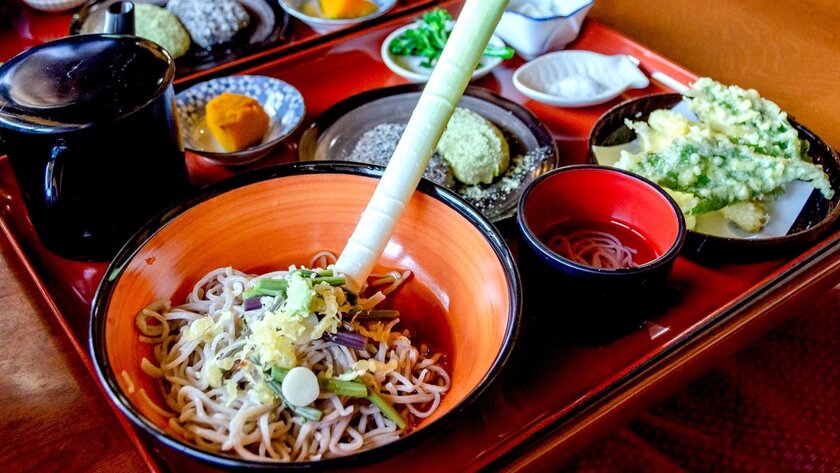
Soba noodles are a specialty eaten without chopsticks, only available in Japan.
Negi means green onion in Japanese. The special thing about Negi-soba is that the noodles are eaten with the green onion (or leek in some places) instead of the usual chopsticks. The raw green onion has a pungent taste that may seem difficult to eat, but is considered suitable for soba.
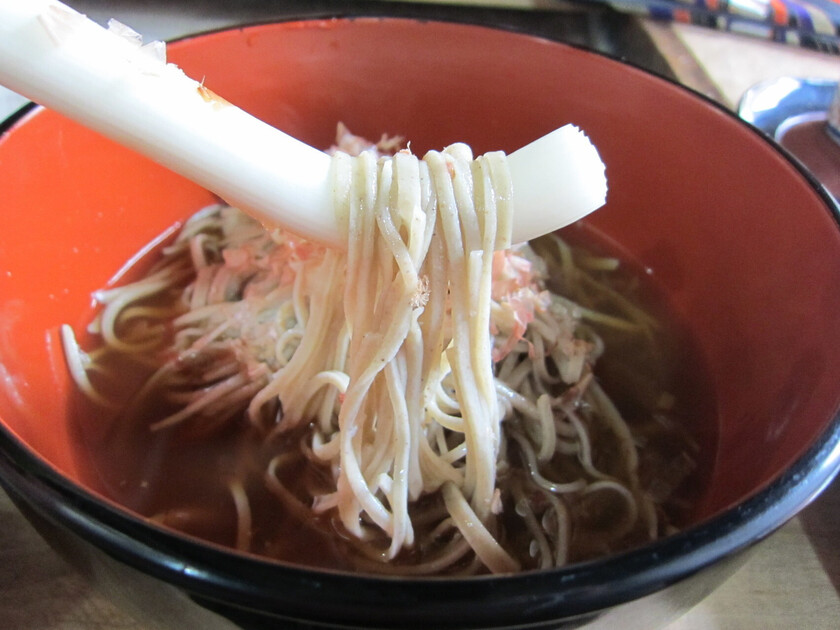
A famous specialty of the ancient village of Ouchijuku, Japan is negi-soba noodles. Each bowl is served with a green onion for diners to use instead of chopsticks.
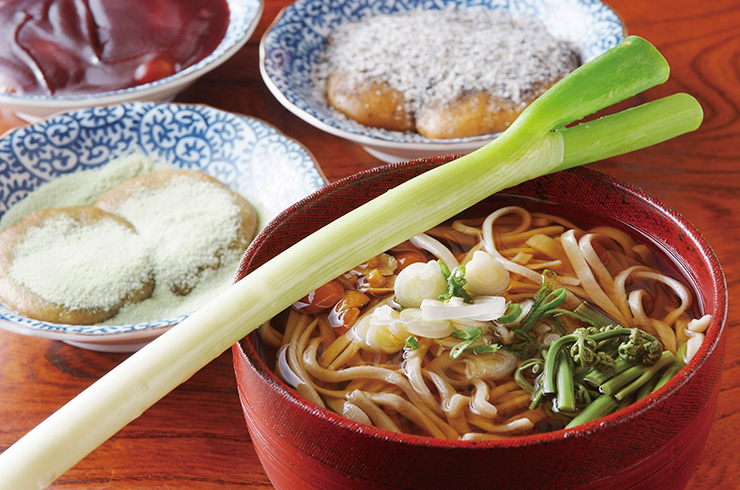
Soba noodles in Ouchi-juku have chewy noodles, a pleasant sweet aftertaste, and a distinctive aroma thanks to being made from triangular beans.
In the past, Aizu people also used to offer soba noodles with a whole green onion as a gift to their lord. They believed that a cut green onion meant that their luck would be broken. Locals also believed that if they ate noodles with a long green onion, they would be blessed with children.
There is an interesting legend about why people eat negi-soba with green onions. It is said that during the Edo period, the word "kiri" (to cut) was a taboo for shoguns. As a sign of respect, when soba noodles were offered to the shoguns of the Tokugawa clan in the Aizu region, people did not cut the onions into small pieces but used a whole long onion. Over time, this unique way of eating became a tradition, and people believed that eating noodles with green onions would bring good luck.
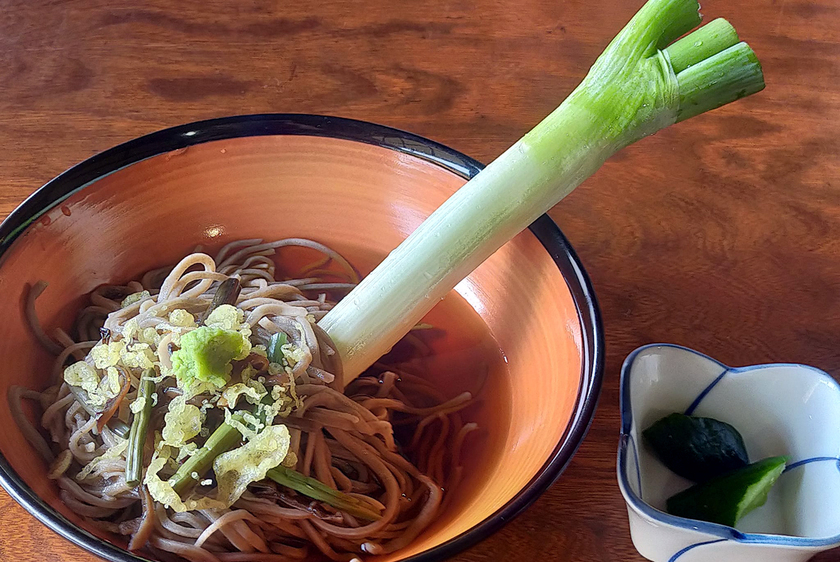
Negi-soba is also known as Takato soba noodles.
Eating negi-soba with a green onion is a fun and creative challenge. The skillful use of a green onion to "scoop" each noodle to your mouth is not only entertaining but also helps you fully enjoy the unique flavor of the dish. The image of chopsticks replaced by green onions creates a unique culinary scene. When the noodles touch the tip of your tongue, you will feel the harmonious combination of the chewy noodles, the sweetness of the green onions and the aroma of the broth. Although challenging, using a green onion to eat negi-soba brings an extremely interesting and memorable culinary experience.
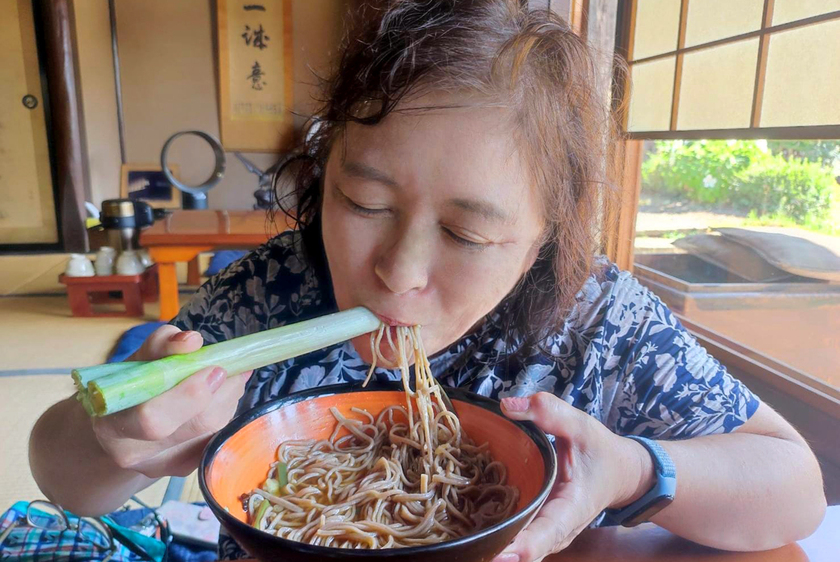
To eat negi-soba noodles properly, diners must use a large green onion.
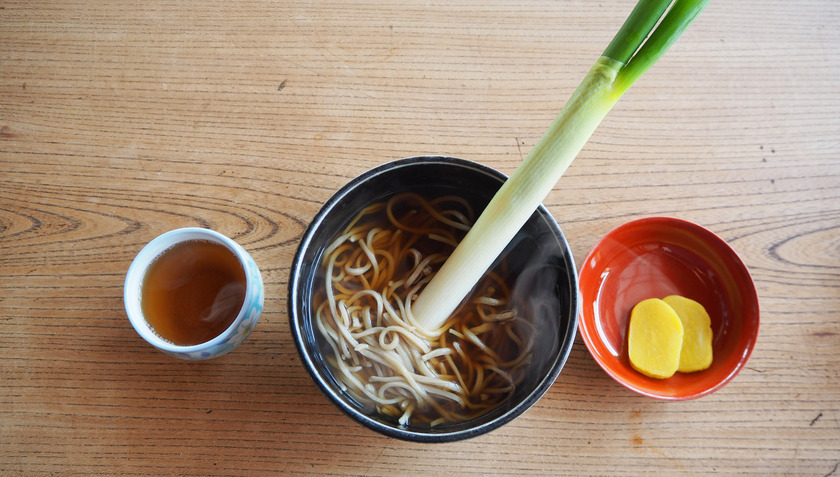
Negi-soba noodles served with grated daikon, pickled yellow radish and sometimes a bit of anchovy
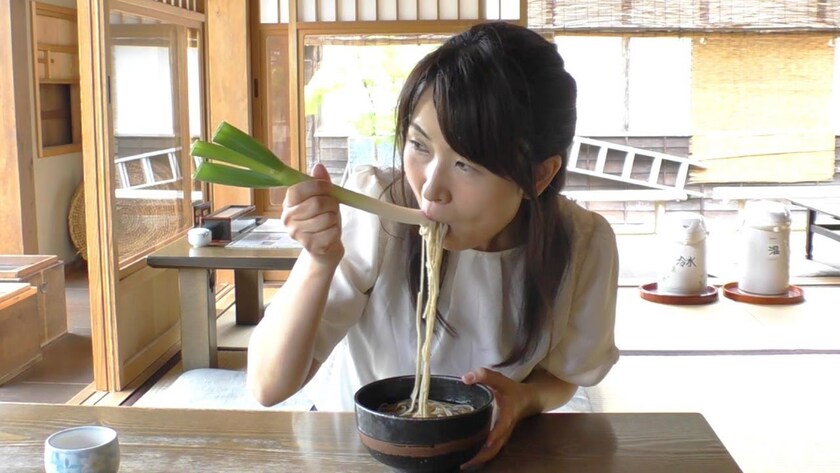
Eating noodles with a single onion is really challenging, especially since you can't pick up too much at once.
Usually flavored with soy sauce, mirin (Japanese rice wine), and dashi (a stock made from fish or seaweed). Some versions may include pork, shrimp, or other vegetables such as asparagus, shiitake mushrooms, soybean paste, or eggs.
Negi-soba offers a diverse culinary experience. When enjoyed hot, the chewy noodles blend with the rich broth. When eaten cold, the crispy noodles melt in your mouth, combined with the spicy wasabi to create a truly refreshing feeling. No matter how you enjoy it, negi-soba is always a great choice for those who love Japanese cuisine.
Visiting restaurants in Ouchi-juku, visitors also have the opportunity to watch chefs make handmade soba noodles. If you have time, don't hesitate to try learning how to make handmade soba noodles. Just book a week in advance with the restaurant or cooking class, you will be fully prepared with ingredients and tools to learn how to make noodles with the instructor in 90 minutes. The reference address is Shokunokan Soba Noodle Making Experience Area in Ouchijuku. The participation fee starts from 1,100 yen (about 200,000 VND) per person, including one meal.







